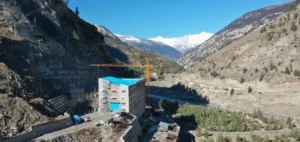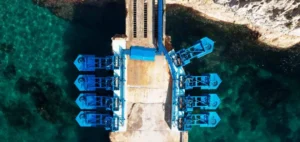Chinese authorities have initiated construction of a large-scale hydropower project on the Yarlung Tsangpo River, located in the Tibet Autonomous Region. Premier Li Qiang attended the inauguration ceremony, according to Chinese state media. The project, aligned with national priorities in infrastructure and energy development, will be funded with public investment estimated at CNY1,218.2bn ($167.1bn).
A state-funded project to secure energy output
The Xinhua agency reported that the complex will include five hydropower plants. The electricity generated will be transmitted to other provinces while also meeting local demand in Tibet. The project, framed as a driver of regional development, is expected to eventually surpass the output of the Three Gorges Dam on the Yangtze River.
China has stated that the initiative fits within its low-carbon growth objectives, although the current focus remains on large-scale public investment in strategic water infrastructure. No details have been disclosed regarding the companies involved in the construction, but funding is entirely under the central government’s responsibility.
Regional concerns over a high-stakes project
India has responded by expressing concerns about the downstream impact on the Brahmaputra River. The Indian Ministry of External Affairs stated in January that it had requested assurances from China that the rights of downstream countries would be respected. The ministry added that authorities would closely monitor the project’s development.
Tensions between the two powers, both with extensive disputed borders, make this type of initiative particularly sensitive. The Brahmaputra River is a vital water source for several northeastern Indian states, further intensifying geopolitical concerns.
A state-led project in an ecologically fragile region
The Tibetan Plateau, where the dam is being built, is known for its climate vulnerability. Despite warnings from several scientists about potential environmental risks, Beijing has not announced any changes to the initial plans.
The execution of this project demonstrates China’s ability to mobilise substantial public resources to secure its energy supply, even in sensitive border regions.






















